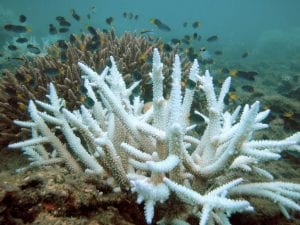Coral reefs hold immense value for both human and marine life. As the most diverse of all ecosystems, coral reefs support one quarter of all ocean species. Coral reefs also affect human industry through providing tourist jobs, shoreline protection, food, and medicine. However, human activity has severely damaged and destroyed coral reefs directly through destructive fishing, overfishing, and pollution, as well as indirectly through warming oceans and invasive species.
In a relatively new study published in Restoration Ecology, researchers “documented a large coral reef rehabilitation in [Bahasa,] Indonesia aiming to restore ecosystem functions by increasing live coral cover on a reef severely damaged by blast fishing and coral mining.” Previously, most reef recovery programs were focused on setting up fisheries and MPAs in an effort to reduce the impact of overfishing, so this project was relatively novel in its strategy to restore damaged reefs on a large scale. The researchers, led by Susan L. Williams, set up “small, modular, open structures to stabilize rubble and support transplanted coral fragments” (also known as “spiders”).
These structures proved extremely successful as “live coral cover on the structures increased from less than 10% initially to greater than 60%” over the course of the study. Additionally, the project was relatively inexpensive; the 11,000 structures covering 7,000 m2 cost only $174,000 USD. This project is extremely exciting because it demonstrates that large scale efforts to rehabilitate coral reefs are achievable even where reefs have been severely damaged.



Leave a Reply